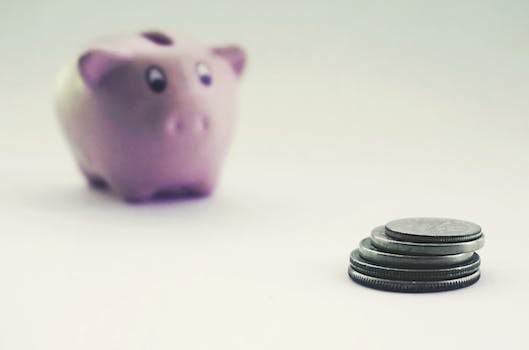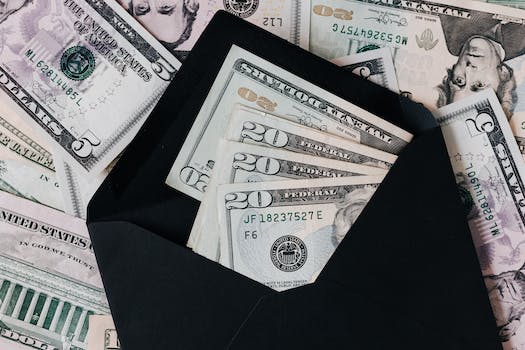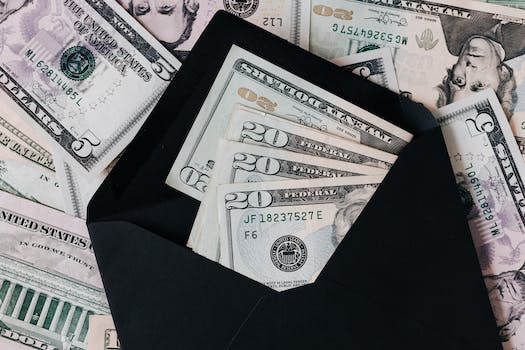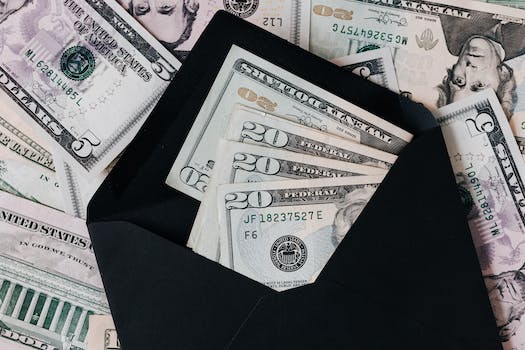How To Create A Personal Budget And Save Money
“Take control of your finances and achieve your financial goals with these simple steps to creating a personal budget.”
Introduction
Creating a personal budget is an essential step towards financial stability and achieving your financial goals. It helps you track your income and expenses, identify areas where you can cut back on spending, and save money for emergencies or future expenses. In this article, we will discuss how to create a personal budget and save money.
5 Simple Steps to Creating a Personal Budget
Creating a personal budget can seem daunting, but it’s an essential step towards financial stability. By taking control of your finances, you can save money, pay off debt, and achieve your financial goals. Here are five simple steps to creating a personal budget and saving money.
Step 1: Determine Your Income
The first step in creating a personal budget is to determine your income. This includes your salary, any bonuses or commissions, and any other sources of income. If you have a variable income, such as freelance work or a commission-based job, it’s important to estimate your average monthly income.
Step 2: Track Your Expenses
The next step is to track your expenses. This includes everything from rent or mortgage payments to groceries, utilities, and entertainment. It’s important to be thorough and include all of your expenses, no matter how small. You can use a spreadsheet or a budgeting app to track your expenses.
Step 3: Categorize Your Expenses
Once you’ve tracked your expenses, it’s time to categorize them. This will help you see where your money is going and identify areas where you can cut back. Common categories include housing, transportation, food, entertainment, and debt payments.
Step 4: Set Goals
Now that you know your income and expenses, it’s time to set some goals. This could include paying off debt, saving for a down payment on a house, or building an emergency fund. It’s important to set realistic goals that are achievable within your budget.
Step 5: Create Your Budget
The final step is to create your budget. Start by subtracting your expenses from your income. If you have money left over, allocate it towards your goals. If you don’t have enough money to cover your expenses, you’ll need to find ways to cut back. This could include reducing your entertainment budget, finding ways to save on groceries, or cutting back on transportation costs.
Tips for Sticking to Your Budget
Creating a budget is just the first step. To achieve your financial goals, you’ll need to stick to your budget. Here are some tips to help you stay on track:
1. Use cash for discretionary spending. This will help you avoid overspending on credit cards.
2. Find ways to save on everyday expenses. This could include using coupons, buying generic brands, or shopping at discount stores.
3. Avoid impulse purchases. Before making a purchase, ask yourself if it’s something you really need.
4. Review your budget regularly. This will help you identify areas where you can cut back and make adjustments as needed.
5. Celebrate your successes. When you reach a financial goal, take time to celebrate your achievement. This will help motivate you to continue working towards your goals.
In conclusion, creating a personal budget is an essential step towards financial stability. By following these five simple steps, you can take control of your finances, save money, and achieve your financial goals. Remember to be realistic, track your expenses, and stick to your budget. With a little discipline and determination, you can achieve financial freedom.
The Importance of Tracking Your Expenses for Saving Money

Creating a personal budget is an essential step towards financial stability. It helps you keep track of your expenses, prioritize your spending, and save money for future goals. However, creating a budget is not enough; you need to track your expenses to ensure that you are sticking to your budget and making progress towards your financial goals.
Tracking your expenses means keeping a record of every penny you spend. It may seem tedious, but it is the only way to know where your money is going and identify areas where you can cut back. There are several ways to track your expenses, including using a spreadsheet, a budgeting app, or a pen and paper.
Using a spreadsheet is a popular method of tracking expenses. You can create a simple spreadsheet with columns for the date, description, category, and amount of each expense. You can then sum up the expenses by category and compare them to your budget. This method allows you to see your spending patterns and adjust your budget accordingly.
Budgeting apps are another convenient way to track your expenses. There are many free apps available that allow you to link your bank accounts and credit cards, automatically categorize your expenses, and provide you with reports and alerts. These apps make it easy to track your expenses on the go and keep you accountable for your spending.
If you prefer a more traditional approach, you can use a pen and paper to track your expenses. You can carry a small notebook with you and write down every expense as you make it. This method requires more discipline and organization, but it can be effective if you prefer a hands-on approach.
Regardless of the method you choose, tracking your expenses is crucial for saving money. It allows you to identify areas where you are overspending and make adjustments to your budget. For example, if you notice that you are spending too much on dining out, you can cut back on restaurant meals and cook more at home. This simple change can save you hundreds of dollars a month and help you reach your financial goals faster.
Tracking your expenses also helps you stay motivated and accountable. When you see your progress towards your financial goals, you are more likely to stick to your budget and resist the temptation to overspend. It also helps you avoid impulse purchases and make more informed decisions about your spending.
In conclusion, tracking your expenses is an essential part of creating a personal budget and saving money. It allows you to identify areas where you can cut back, stay accountable for your spending, and make progress towards your financial goals. Whether you choose to use a spreadsheet, a budgeting app, or a pen and paper, the key is to be consistent and disciplined in tracking your expenses. With time and practice, you will develop good habits and achieve financial stability.
How to Cut Costs and Save Money on Everyday Expenses
Creating a personal budget is an essential step towards financial stability. It helps you track your expenses, identify areas where you can cut costs, and save money for future goals. However, sticking to a budget can be challenging, especially when you have to deal with everyday expenses. In this article, we will discuss some practical tips on how to cut costs and save money on everyday expenses.
1. Make a list of your expenses
The first step towards cutting costs is to know where your money is going. Make a list of all your expenses, including fixed expenses like rent, utilities, and insurance, and variable expenses like groceries, entertainment, and transportation. Once you have a clear picture of your expenses, you can identify areas where you can cut costs.
2. Shop smart for groceries
Groceries are a significant expense for most households. To save money on groceries, start by making a list of what you need before going to the store. Stick to your list and avoid impulse buying. Look for sales and discounts, and consider buying in bulk for items that you use frequently. You can also save money by buying generic or store-brand products instead of name-brand products.
3. Reduce your energy bills
Energy bills can be a significant expense, especially during the summer and winter months. To reduce your energy bills, start by turning off lights and appliances when not in use. Use energy-efficient light bulbs and appliances, and consider installing a programmable thermostat to regulate your home’s temperature. You can also save money by sealing air leaks and insulating your home.
4. Cut back on dining out
Dining out can be a significant expense, especially if you do it frequently. To save money on dining out, consider cooking at home more often. Plan your meals in advance and make a grocery list accordingly. You can also save money by using coupons and discounts when dining out, or by choosing less expensive restaurants.
5. Use public transportation
Transportation can be a significant expense, especially if you own a car. To save money on transportation, consider using public transportation instead of driving. Public transportation is often cheaper than driving, and it can also save you time and reduce stress. If you must drive, consider carpooling or using a more fuel-efficient vehicle.
6. Cut back on entertainment expenses
Entertainment expenses can add up quickly, especially if you enjoy going to movies, concerts, or sporting events. To save money on entertainment, consider finding free or low-cost activities in your area. You can also save money by using discounts and coupons when purchasing tickets, or by choosing less expensive entertainment options.
7. Avoid unnecessary expenses
Finally, to save money on everyday expenses, avoid unnecessary expenses. This includes things like buying expensive clothes or gadgets, eating out frequently, or subscribing to services that you don’t use. Before making a purchase, ask yourself if it’s something you really need or if it’s just a want.
In conclusion, cutting costs and saving money on everyday expenses is essential for creating a personal budget and achieving financial stability. By making a list of your expenses, shopping smart for groceries, reducing your energy bills, cutting back on dining out, using public transportation, cutting back on entertainment expenses, and avoiding unnecessary expenses, you can save money and achieve your financial goals. Remember, every little bit counts, so start small and work your way up to bigger savings.
Creating a Savings Plan: Tips and Tricks
Creating a Savings Plan: Tips and Tricks
Saving money is an essential part of financial planning. It helps you achieve your financial goals, whether it’s buying a house, starting a business, or retiring comfortably. However, saving money can be challenging, especially if you don’t have a plan. In this article, we’ll discuss some tips and tricks on how to create a personal budget and save money.
1. Set a savings goal
The first step in creating a savings plan is to set a savings goal. This goal should be specific, measurable, achievable, relevant, and time-bound. For example, if you want to save for a down payment on a house, your goal could be to save $20,000 in two years. Having a specific goal will help you stay motivated and focused on your savings plan.
2. Track your expenses
To create a personal budget, you need to know how much money you’re spending each month. Start by tracking your expenses for a month or two. Write down everything you spend money on, including bills, groceries, entertainment, and other expenses. This will give you a clear picture of where your money is going and help you identify areas where you can cut back.
3. Create a budget
Once you know how much you’re spending each month, it’s time to create a budget. A budget is a plan for how you will spend your money each month. Start by listing your income and fixed expenses, such as rent, utilities, and car payments. Then, allocate money for variable expenses, such as groceries, entertainment, and clothing. Make sure to include a category for savings in your budget.
4. Cut back on expenses
If you’re spending more than you’re earning, you need to cut back on expenses. Look for areas where you can reduce your spending, such as eating out less, canceling subscriptions you don’t use, and shopping for deals on groceries. Cutting back on expenses can be challenging, but it’s essential if you want to save money.
5. Automate your savings
One of the easiest ways to save money is to automate your savings. Set up a direct deposit from your paycheck to your savings account. This way, you won’t have to think about saving money each month. It will happen automatically, and you’ll be less likely to spend the money you intended to save.
6. Use cashback apps
Cashback apps are a great way to save money on everyday purchases. These apps offer cashback or rewards for shopping at specific stores or buying certain products. Some popular cashback apps include Ibotta, Rakuten, and Swagbucks. Using these apps can help you save money without changing your spending habits.
7. Review your budget regularly
Finally, it’s essential to review your budget regularly. Your income and expenses may change over time, so it’s important to adjust your budget accordingly. Review your budget at least once a month and make any necessary changes. This will help you stay on track with your savings plan and achieve your financial goals.
In conclusion, creating a personal budget and saving money requires discipline and commitment. Set a savings goal, track your expenses, create a budget, cut back on expenses, automate your savings, use cashback apps, and review your budget regularly. By following these tips and tricks, you can create a savings plan that works for you and achieve your financial goals.
The Benefits of Investing in Your Future: Saving for Retirement
Saving money is an essential part of financial planning. It is a way to ensure that you have enough money to cover your expenses and achieve your financial goals. One of the most important financial goals is saving for retirement. Retirement may seem far away, but it is never too early to start planning for it. In this article, we will discuss the benefits of investing in your future by saving for retirement and how to create a personal budget to help you achieve this goal.
The Benefits of Investing in Your Future: Saving for Retirement
Retirement is a time when you can relax and enjoy the fruits of your labor. However, it is also a time when you may face financial challenges if you have not saved enough money. Saving for retirement is essential because it allows you to maintain your standard of living and enjoy your retirement years without worrying about money.
One of the benefits of saving for retirement is that you can take advantage of compound interest. Compound interest is the interest earned on the initial investment plus the interest earned on the interest. This means that the longer you save, the more interest you will earn, and the more your money will grow.
Another benefit of saving for retirement is that you can take advantage of tax-deferred savings plans. These plans allow you to save money on taxes by deferring taxes on your contributions until you withdraw the money in retirement. This means that you can save more money for retirement and pay less in taxes.
Creating a Personal Budget to Save Money
Creating a personal budget is an essential step in saving money for retirement. A personal budget is a plan that outlines your income and expenses and helps you manage your money. Here are some steps to help you create a personal budget:
1. Determine your income: Start by calculating your monthly income. This includes your salary, bonuses, and any other sources of income.
2. List your expenses: Make a list of all your monthly expenses, including rent/mortgage, utilities, groceries, transportation, and entertainment.
3. Categorize your expenses: Categorize your expenses into fixed and variable expenses. Fixed expenses are those that do not change, such as rent/mortgage and utilities. Variable expenses are those that can change, such as groceries and entertainment.
4. Set financial goals: Set financial goals for yourself, such as saving for retirement, paying off debt, or saving for a down payment on a house.
5. Create a budget: Use your income and expenses to create a budget. Start by subtracting your expenses from your income. If you have money left over, allocate it towards your financial goals. If you do not have enough money to cover your expenses, look for ways to cut back on your spending.
6. Track your spending: Keep track of your spending to ensure that you are sticking to your budget. Use a budgeting app or spreadsheet to track your expenses and adjust your budget as needed.
Conclusion
Saving for retirement is an essential part of financial planning. It allows you to maintain your standard of living and enjoy your retirement years without worrying about money. Creating a personal budget is an essential step in saving money for retirement. It helps you manage your money and allocate funds towards your financial goals. By following these steps, you can create a personal budget and start saving for your future today.
Conclusion
Creating a personal budget is an essential step towards financial stability and saving money. By tracking your income and expenses, you can identify areas where you can cut back and save more. It is important to set realistic goals and stick to your budget to achieve your financial objectives. Additionally, regularly reviewing and adjusting your budget can help you stay on track and make necessary changes. With discipline and commitment, anyone can create a personal budget and save money for their future.






